#hatice kadin
Photo

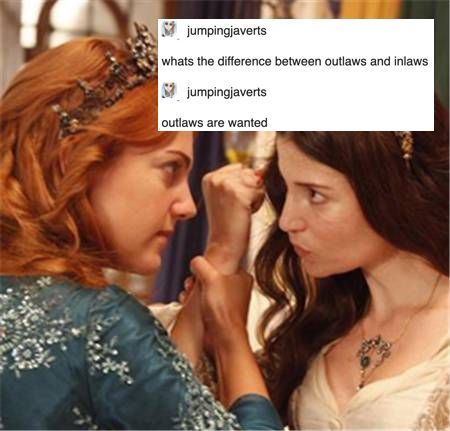


Some more Magnificent Century + text posts
#magnificent century#mcedit#magnificentcenturyedit#perioddramaedit#hurrem#hurrem sultan#that bitch hatice#hatice sultan#hürrem#hürrem sultan#mahidevran hatun#mahidevran kadin#mahidevran sultan#post
16 notes
·
View notes
Text
Haseki Humasah Sultan
Farya Bethlen/Sultan
Haseki Hürrem Sultan
Sah Sultan
Mahidevran Sultan
Halime Sultan
Mihrimah Sultan
Nurbanu Sultan
Hatice Sultan
Safiye Sultan

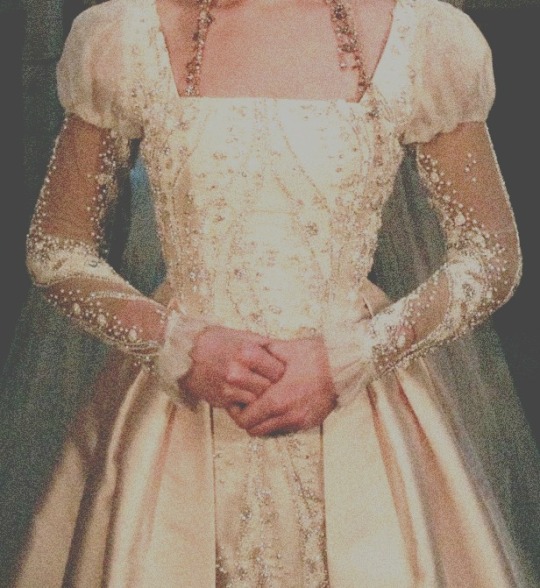

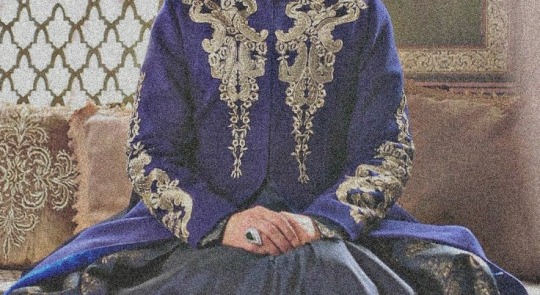





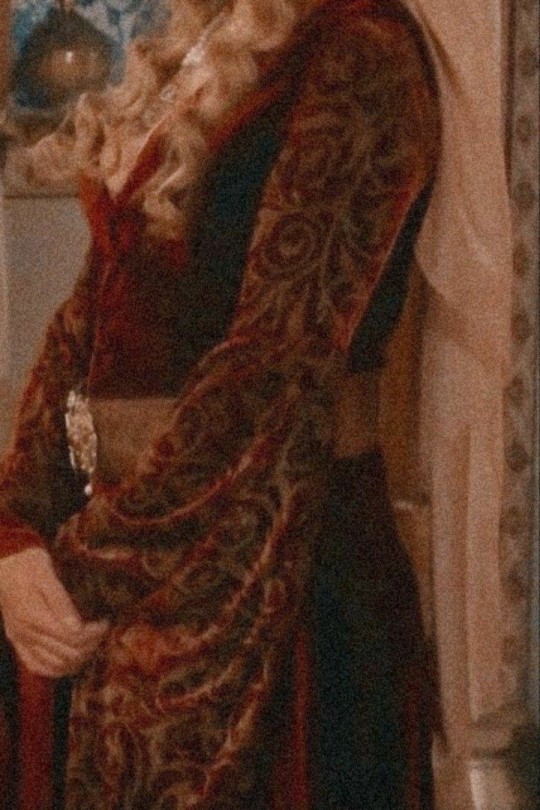
#history#magnificent century#muhteşem yüzyıl#ottoman#sultanas#ottoman sultanas#ottoman valide#ottoman history#valide sultan#safiye sultan#safiye#aesethic#haseki nurbanu sultan#haseki sultan#mihrimah sultan#hatice sultan#mahidevran kadin#mahidevran hatun#mahidevran#mahidevran sultan#telli humasha sultan#telli haseki humasha sultan#humasha sultan#haseki humasha#sah sultan#valide halime sultan#halime sultan#muhtesem yuzil kosem#magnificent century kosem
16 notes
·
View notes
Text

KADIN
Kadın, âdemden doğan, âdemi doğuran
Hz. Asiye gibi firavuna karşı koyan
Hz. Meryem gibi iffetli olan
Rahmanın Rahim sıfatını taşıyan kadın
Nemruttan kaçıp İbrahimi mağrada doğuran
Ömerlere, Yavuzlara, Fatihlere ana olan kadın
Hz. Hatice gibi sadık
Hz. Fatıma gibi cennet kokan
Zeynep gazaliler gibi davası için ölümüne koşan kadın
Hiç düşünmeden sırtında süt bebesiyle cephelere mermi taşıyan
Savaşlara katılarak korkusuzca cenk eden
Ülkesi için düşman karşısında gözünü kırpmadan can veren kadın
Sabahın seherinde tarlaya koşan
Doğurduğu evladı için saçını süpürge eden
Kıymeti ve değeri bilinmeyen ana ve eş kadın
Örtüsünden dolayı horlanıp dışlanan
Özgürlükleri ve hürriyeti kısıtlanan
Keyfiyetçiler tarafından okuma iradesi elinden alınan kadın
İstemediği halde zorla evlendirilen
Dedesi yaşındakine üç beş kuruşa satılan
Hür iradesini kullanmaya fırsat verilmeyen kadın
Yargılanmadan meydanlarda vurulan
Acımasızca sokak ortalarında darp edilen
Hayasızca ticareti yapılan kadın
Güzel ahlakı hayatına sokarak izzet ve şereflenen
Arını namusunu dış etkenlere karşı koruyan
Hak ettiği hakkı verilmesi gereken
Ayağının altında cennet kokan kadın
Ve Kadın, Allah'ın en değerli emaneti olan...🌺🦋
.
.
2 notes
·
View notes
Text
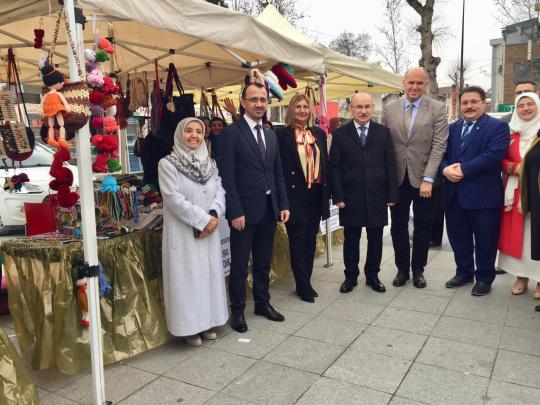
Sakarya Gar Meydanı Önünde Kadınların ürettikleri ürünler sergilendi
Sakarya İli Adapazarı Merkez Gar Meydanı önünde kurulan stantlarda girişimci kadınlar 8 Mart Dünya Kadınlar günü kapsamında kendi ürettikleri ve hazırladıkları ürünleri satışa sundu. Sakarya Valiliği ve Sosyal Hizmetler İl Müdürlüğü tarafından organize edilen çalışmaya halkın ilgisi yoğun oldu.
KADIN EMEĞİ GÜNÜ BİZDE EMEKLERİMİZİ SERGİLEYELİM”
Çalışma kapsamında programın amacından bahseden Sakarya ŞÖNİM Müdürü Lütfiye Yiğit,” Kadın emeği günü bizde emeklerimizi sergileyelim. Sakarya da bulunan kadın kooperatiflerimizi davet ettik. Burada ürünlerini sergiliyorlar, satışlarını gerçekleştiriyorlar. 10 tane kadın kooperatifimiz var burada” dedi.
Program hakkında düşüncelerini ifade eden ADA YEREL’in Kadın Girişimci üyesi Kübra Öztürk, “Çok güzel bir etkinlik oluyor açıkçası bir de merkezde olması bizim için çok iyi oldu. Normalde biz ADA YEREL Kadın Gitişimi olarak her Salı ve Cumartesi günleri Adapazarı Belediye Başkanı Sayın MUTLU IŞIKSU’nun tahsis ettiği Menekşe Sanat Sokağında stant açıyoruz ama burası daha iyi oldu. Daha uzun süreli olmasını temenni ediyoruz “şeklinde konuştu.
S.S. ADA YEREL Kadın Girişimi Üretim Ve İşletme Kooperatifi'de Başkanı HÜLYA LÜLECİ Sayın Valimiz Yaşar Karadeniz, Aile Sosyal Hizmetler Müdürü Sayın Zekeriya Selamet, Milli Eğitim İl Müdürü Sayın Coşkun Bakırtaş, Ticaret İl Müdürü Sayın Emre Atmaca, Ak Parti İl Başkanı Sayın Yasemin Turan, İlçe Başkanı Sayın Hatice Genç, Kızılay Yönetim Kurulu Üyesi Sayın Leyla Deniz, Ak Parti Erenler Belediye Meclis Üyesi Adayı Sayın Nur Günşah Gar Meydan’ndaki 8 Mart Dünya Emekçi Kadınlar Günü etkinliğinde açılan tüm stantları ziyaret ettiler. ADA YEREL Kadın Girişimi Kooperatifi ve MENEKŞE SANAT SOKAĞI Stantlarımızı da ziyaret ettiler, takdirlerine mazhar olmaktan onurluyuz, ifadelerini kullandı..
https://www.fisiltihaberleri.com/haber/sakarya-gar-meydani-onunde-kadinlarin-urettikleri-urunler-sergilendi-10518.html
HABERİN AYRINTILARI VE GÜNÜN FOTOĞRAFLARI...
0 notes
Text
AKDENİZ BELEDİYESİ’NDEN ‘KADIN HAKLARI GÜNÜ’ PANELİ
AKDENİZ BELEDİYESİ’NDEN ‘KADIN HAKLARI GÜNÜ’ PANELİ
Gazi Mustafa Kemal Atatürk tarafından; Türk kadınına seçme ve seçilme hakkının verilmesinin 88’inci yıldönümü ve ‘5 Aralık Dünya Kadın Hakları Günü’ dolayısıyla, Akdeniz Belediyesi Kadın ve Aile Hizmetleri Müdürlüğü’nce panel düzenlendi.
Mersin Milletvekili Zeynep Gül Yılmaz, Akdeniz Belediye Başkanı M. Mustafa Gültak ve Avukat Hatice Kübra Turgut’un sunum yaptığı panele; kadın muhtarlar, kültür…
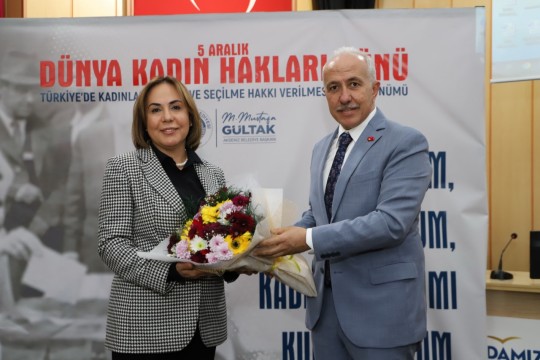
View On WordPress
0 notes
Text
Konya'da işten çıkıp meskene gelen Hatice Kuyucak, 75 yaşındaki emekli eşi Abdullah Kuyucak'ı banyoda kanlar içinde yatarken buldu. Yaşlı adamın boynundan ve sırtından aldığı bıçak darbesiyle öldürüldüğü tespit edildi.
Meram ilçesi Hadimi Mahallesi Halkabegus Sokak'ta skent aydın haberlerit 20.00 sıralarında belediyede park ve bahçeler ünitesinde emekçi olarak çalışan Hatice Kuyucak, konuta geldiğinde eşi Abdullah Kuyucak'ı banyoda giyinik vaziyette hareketsiz halde buldu.YAŞLI ADAM KANLAR İÇİNDE BULUNDUBüyük paniğe kapılan Hatice Kuyucak, komşularından yardım istedi. Konuta gelen komşuları Kuyucak'ın kanlar içinde olduğu fark etti. İhbar üzerine olay yerine polis ve sıhhat grupları sevk edildi.BOYNUNDAN VE SIRTINDAN BIÇAKLANDIEve gelen gruplarca yapılan incelemede Kuyucak'ın boynundan ve sırtından bıçaklanarak öldürüldü tespit edildi. Kuyucak'ın cansız vücudu, polis ve savcının olay yerinde yaptığı incelemenin akabinde otopsi için Konya Kent Hastanesi morguna kaldırıldı.POLİS ÇALIŞMA BAŞLATTIPolis, Kuyucak'ı bıçaklayarak öldüren kişi ya da şahısların yakalanması için çalışma başlattı. Olayla ilgili başlatılan çalışma sürdürülüyor.aydın haberleri / İsmail Akkaya - 3. Sayfa ve daha fazla aydın haber yazıları okumak için Güncel sayfasını ziyaret edebilirsiniz.
https://rehberaydin.com/isten-donen-kadin-75-yasindaki-esini-oldurulmus-halde-buldu/
0 notes
Photo

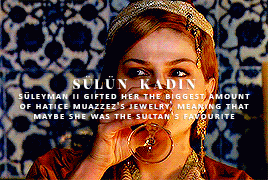


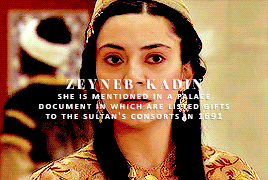
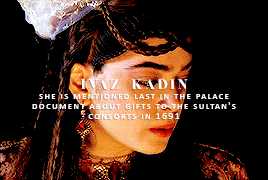
𝙤𝙩𝙩𝙤𝙢𝙖𝙣 𝙘𝙤𝙣𝙨𝙤𝙧𝙩𝙨: Süleyman II
The harem life shared by Süleyman II, who was clumsy, short-sighted, nervous and sickly, who had been accustomed to living indoors since childhood, was probably dull; he did not have any children. He confiscated the jewels of his brother Ahmed (II)'s mother Muazzez, who died in 1687, and distributed them to his own women; it is learned from another document in the palace archives that Ahmed II had these three or five pieces of jewelry taken back when he ascended the throne — Necdet Sakaoğlu, Bu Mülkün Kadın Sultanları
#history#historyedit#ottoman history#suleyman ii#hatice kadin#sulun kadin#sehsuvar kadin#behzad kadin#zeyneb kadin#ivaz kadin#ottomanladiesedit#*consorts
140 notes
·
View notes
Photo
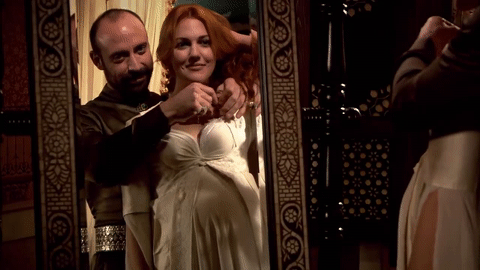




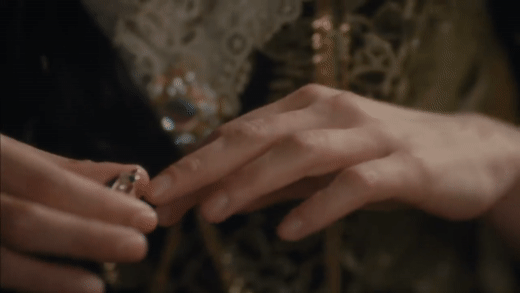
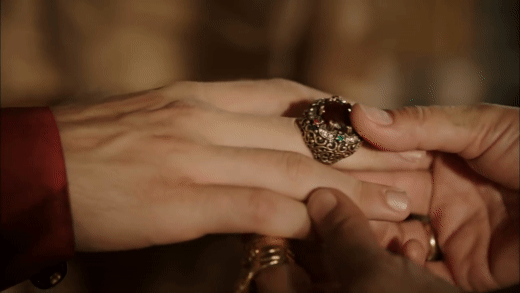



People putting on jewelry in period dramas- Muhtesem Yuzyil, Muhtesem Yuzyil: Kosem, Kalbimin Sultani, and Ekaterina
#muhtesem yuzyil#muhtesem yuzyil kosem#magnificent century#magnificent century kosem#kalbimin sultani#sultan of my heart#hosyar kadin#hosyar sultan#Sultan Ahmed I#Ahmed I#Sultan Ahmed#burnaz atike sultan#atike sultan#turhan hatice sultan#turhan sultan#haseki hurrem sultan#hurrem sultan#hurrem hatun#jewelry#jewlery#Catherine the Great#Ekaterina#Empress Catherine#catherine II of Russia#rings#neckalce#necklaces#period drama#historical drama#historical tv
95 notes
·
View notes
Photo






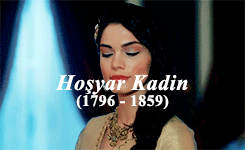

anonymous asked:
favorite royal mistresses (amarah’s pick)
#weloveperioddrama#history#history edit#chinese history#japanese history#egyptian history#french history#ottoman history#yang guifei#shajar al durr#odette de champdivers#turhan hatice sultan#hosyar kadin#melusine von der schulenberg#madame du barry#yanagihara naruko#8th century#13th century#14th century#15th century#17th century#18th century#19th century#20th century#our edits#by amarah#anonymous#request
340 notes
·
View notes
Photo

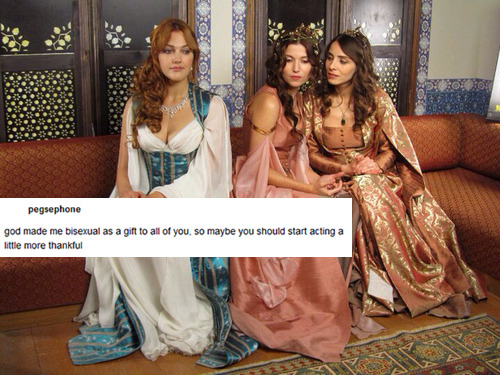


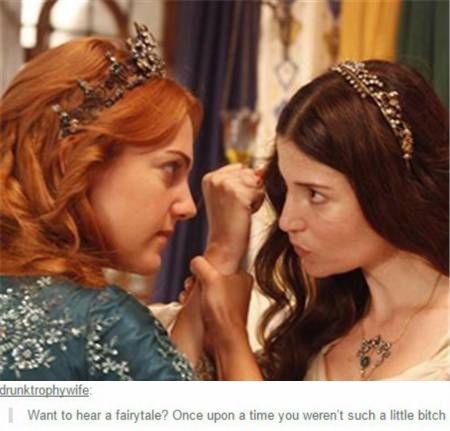


Magnificent Century + Textposts
#mc#mcedit#magnificent century#magnificentcenturyedit#period drama#perioddramaedit#muhtesem yuzyil#muhteşem yüzyıl#wspaniałe stulecie#mahidevran sultan#mahidevran kadin#hurrem#hurrem sultan#hürrem sultan#hürrem#mihrimah sultan#hatice sultan#the bitch hatice#post
17 notes
·
View notes
Photo

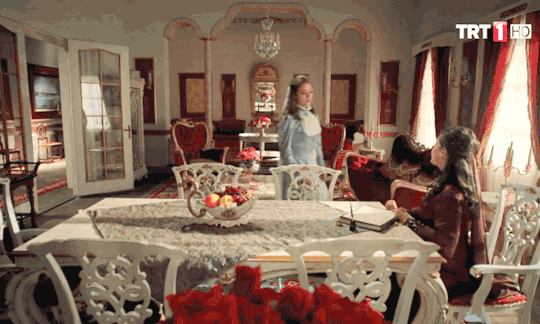
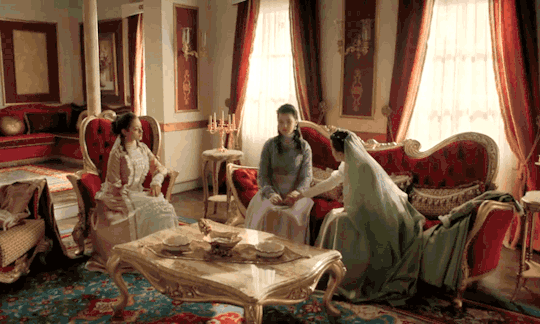
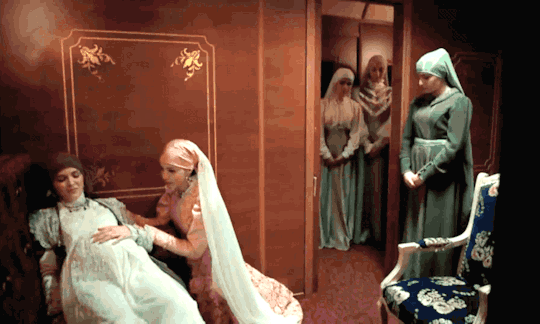


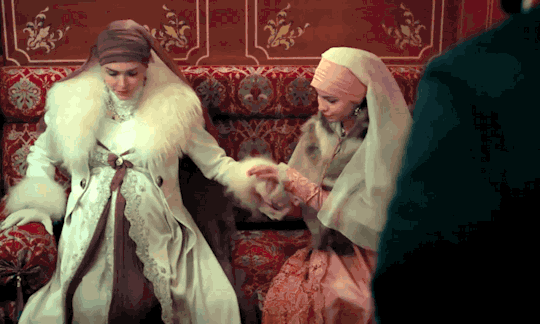
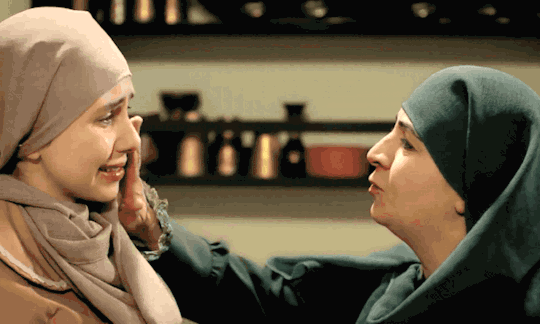
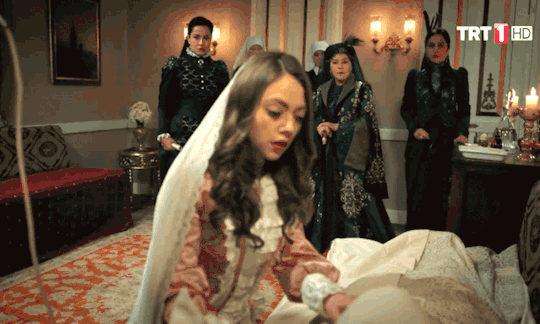

Payitaht Abdülhamid, Season 1 + Women Helping & Caring About Each Other, Part 1
#Payitaht Abdulhamid#Payitaht Abdülhamid#PAEdit#Bidar SUltan#Bidar Kadin#Bidar Kadinefendi#perioddramaedit#weloveperioddrama#period drama#historical drama#HistoricalDramasPlus#PAPlus#Hatice Sultan#Naime Sultan#Fehime Sultan#Fatma Pesend Sultan#Fatma Pesend Hanim#Pakize Hatun#Pakize Sultan#Ahsen Hatun#PA 1x04#PA 1x05#PA 1x06#PA 1x07#PA 1x08#pregnancy tw#unconscious tw#Sara Hedaya#Awkward-sultana#NVM I'm Fabulous
15 notes
·
View notes
Photo
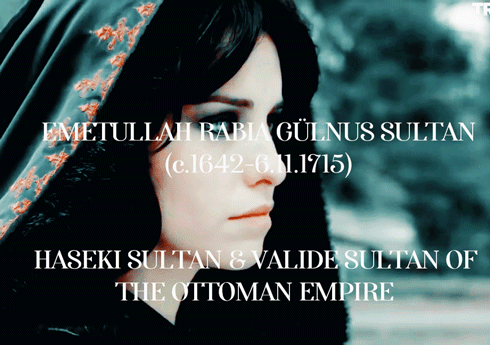
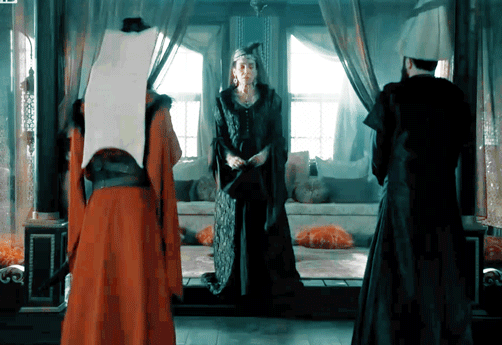




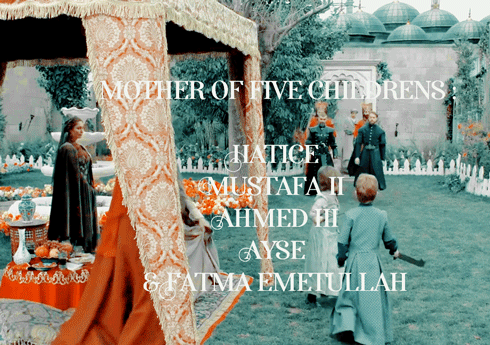

woman that i love: [2/5]
↠ emetullah rabia gulnus sultan
↠ haseki & valide sultan of the ottoman empire
Born around 1642 under the name Evmania Vorya, popular folklore says that she was the daughter of an Orthodox bishop, descendant of the Verzzini family who founded the town of Rethmyno in Crete.
According to tradition, she and her two sisters were captured at the start of the Cretan War, around 1646. Her two sisters were bought by Pasha at the Istanbul market, while Gulnus was sold for the imperial harem
Educated in the harem, which renamed her (perhaps) Emetullah Rabia Gülnus, she became, at an unknown date, Mehmed's concubine. The Venetian ambassador described her as a tall, slender woman with black curly hair and blue eyes.
She gave him her first child: a daughter, Hatice, around 1660, then her first son, Mustafa, in 1664. Of a total of five children, four will reach adulthood (only Ayse died in childhood)
After Mustafa’s birth, Gülnus was named Haseki Sultan. She was the only (or one of the very few) haseki to accompany her husband on military campaigns, and far from the battlefields, she was known to join him on his hunting parties. Mehmed insisted each time, to take her with him. Subject of contemporary European engravings, she was drawing riding a horse. His son, Ahmed, was the first sultan born outside of Turkey, in the present-day Bulgaria, in December 1673.
A myth on Ottoman empire was the possibly rivalry between Gülnus and the concubine Gülbeyaz and possibly lead the murder of that concubine. If rivalry was largely possible, murder seem exagerate or invented.
Following the deposition of Mehmed IV, Gülnus was exiled in the old palace and separated from his sons. Afife Kadin wrote in her poems that she regularly heard Gülnus screaming and crying between the walls of her room.
After the reigns of Ahmed II and Süleyman II, in 1695, Gülnus became Valide Sultan for his eldest son. Unfortunately, it is deposed in 1703 and Gülnus confirms the deposition. Ahmed succeeds his brother. To calm the people angry with the Valide Sultan, he exiles him briefly to the Old Palace.
In 1711, it was she who persuaded Ahmed to declare war on Russia after two years of propaganda in favor of an alliance with the Swedish king Charles XII. Gülnus persuaded his son that the king was a man worth taking a risk.
Emetullah Rabia Gülnus died of illness in 1715, possibly at the age of seventeen.
#get to know me#emetullah rabia gulnus sultan#ottoman empire#sultanate of women#*mine#*women that i love#history#ottoman history
83 notes
·
View notes
Text

🤔 Kadın Kimdir ..?????
Kadın Yüce Allah' ın emanetidir ..
Kadın Yüce kitabın suresinde isimdir ..
Hz.Meryem' dir ..
Kadın Cenneti erkekle paylaşandır ..
Hz. Havva' dır ..
Kadın peygamber doğurandır ..
Hz. Amine' dir ..
Kadın peygamberin alnından öptüğü kız çocuğudur ..
Hz. Fatıma' dır ..
Kadın erkeklere dinini öğreten öğretmendir ..
Hz. Aişe' dir ..
Kadın zalim , diktatör ve sahte ilahlara haddini bildirendir ..
Hz. Asiye' dir ..
Kadın ticarette harama bulaşmadan erkeklerle boy ölçüşen ve hatta onları aşandır , VEFA' dır ..
Hz. Hatice' dir ..
Kadın zalim putperestlere direnip , Şehadeti onursuzluğa yeğleyendir ..
Hz.Sümeyye' dir ..
Kadın en katı insanların karşısında bir çınar gibi diklenip Rabb' iyle Ahdini ilan edendir ..
Hz. Zinnire' dir..
Kadın Annedir ..
Kadın Eştir , Huzurdur..
Kadın Hayat Arkadaşıdır..
Kadın Sığınılan Duadır , Limandır ..
Kadın Zarafettir , Güzelliktir ..
Kadın Sadakattir..
Kadın Misafir , Misafir ağırlayandır ..
Kadın düştüğünde seni yalnız bırakıp gitmeyendir ..
Kadın gittiğinde , arkasında Hüzün ve Pişmanlık bırakandır ..
Velhasıl
KADIN İNSAN' dır ASIL' dır ..
🌿🌿🌿🌿🌿🌿
Kadınlara Gerçek Değerin Verildiği Günleri Görebilmek Dileğimle ..
Hayırlı Huzurlu Nurlu Dualı Günler💞🌹💞
7 notes
·
View notes
Text
Portrait of Emetullah Rabia Gülnüş / Emetullah Rabia Gülnüş portréja
Origin and youth
Emetullah Rabia Gülnüş was a woman of Greek descent who was certainly captured during the Venetian-Ottoman War. The grimace of fate is that the outbreak of the war was attributable to Mehmed IV, who later became Emetullah's sweetheart. In the summer of 1645, Ibrahim I declared war on Venice and sent a large Turkish army to Crete. The immediate cause of the war was that Maltese pirates captured an Ottoman ship carrying several influential people. Among them was the wet-nurse of Mehmed IV and her own son, whom Sultan Ibrahim I loved very much. So much that the he cared more with the wet-nurse's son than he did with his own child, Mehmed. The war lasted for decades, until 1669, so it is not possible to determine exactly when Emetullah was captured.
Emetullah was a gift from a certain Deli Hüseyn Pasha, who took the Cretan slaves he had captured to the Sultan’s palace and recommended the bests to the sultan’s harem. Deli Hüseyn Pasha died in 1659, so Emetullah definitely joined the harem before that time. This, unfortunately, does not help us, for considering that Emetullah was already a favorite of the Sultan in 1660 and this had to be preceded by several years of education, so most likely she was captured before 1654. Many give the year 1645 as captivity, however, this is almost ruled out. In general, children under the age of 5 were not caught, because they caused more trouble than benefit, and were more likely to die during the long and tumultuous journey. Assuming that Emetullah was roughly the same old — or younger — than Mehmed IV (born in 1642), she could have been captured in 1648 at the earliest.
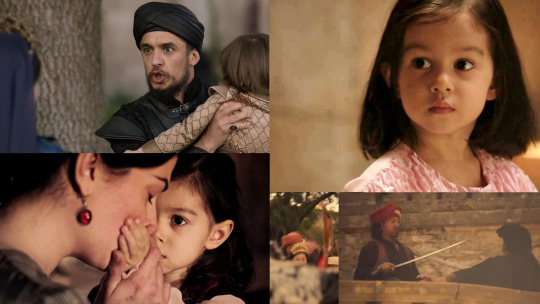
The consort
Emetullah Rabia Gülnüş matured into a beautiful young woman, making her perfectly suited to entertain the sultan. Emetullah is one of the few sultanas whose appearance is known in considerable detail. One of the ambassadors had the opportunity to see one of Emetullah's clothes and belts, on the basis of which he thought the Sultana was a taller-than-average but graceful. The same ambassador heard from his informant that the Sultana had fine skin and blue eyes. Other descriptions said she had black curly hair. Towards the end of her life, Emetullah was reportedly more plump than slender.
It is not known exactly when Mehmed started receiving concubines and when Emetullah became his favorite. Mehmed's first child, a girl, was born in 1660. According to circumstantial evidence, this girl, Hatice, was the first child of Emetullah Rabia Gülnüş. Based on this, we can assume that Emetullah became Mehmed’s partner in the late 1650s. However, their relationship had not really deepened at this point, as Mehmed spent the next period away from his harem, traveling a lot.
Shortly afterwards, the Sultan moved his entire court to Edirne, making it the de facto capital of the Empire. It was a perfect timing that his firstborn son, Mustafa, was born here in 1664. Mehmed was so happy for the birth of his son that he piled up the child’s mother, Emetullah Rabia Gülnüş, with amazing gifts and never left the woman alone from then on. He took her with him on his hunts and even on his campaigns. Together they had at least two more children, Ahmed (later Ahmed III) in 1673 and Fatma Emetullah in 1675. In addition to the four children mentioned above, Mehmed certainly had other children (Ayşe, Bayezid, Ümmügülsüm, Süleyman). The identity of their mother is unknown, it could have been Emetullah Rabia Gülnüş, but even other concubines.
As the Sultan’s favourit concubine, the mother of his children, Emetullah, was the second highest-ranking woman in the harem. Her relationship with the first woman of the harem is controversial. Some say Emetullah was an evil, violent woman who regularly confronted her mother-in-law, Mehmed’s mother, Turhan Hatice Valide Sultan. However, there is no evidence to that effect, in fact! Emetullah and Turhan certainly worked together periodically to achieve their political goals. In 1682, Grand Vizier Merzifonlu Kara Mustafa Pasha began to anger Turhan more and more, as he tried to make her political influence impossible. We don’t know what motivation Gülnüş was for, but she helped Turhan remove the pasha. Eventually, unfortunately, Turhan died before the pasha was deposed. Either way, this collaboration makes it unlikely that the relationship between Emetullah and Turhan would have been bad. In addition, Emetullah had a good relationship with Turhan’s eunuch, Yusuf Agha, which would also not have been possible if the two women did not like and respect each other.
Many blame Emetullah’s ambitions for the supposedly fragile relationship. Legend has it that Mehmed’s beloved, Emetullah Rabia Gülnüş, tried to persuade him to execute his half-brothers and make their own sons his heir instead. However, knowing the infinitely close relationship between Mehmed and his sons, we cannot rule out that Mehmed himself wanted to change the inheritance. Whoever was its inventor, no one supported the idea, not the people, not the pashas and not even Mehmed’s mother, Turhan. Turhan, to protect Prince Suleiman and Ahmed from death and his son from fall, always kept her two foster sons with her. If Turhan traveled, she took them with her so that Mehmed would not execute them in her absence.
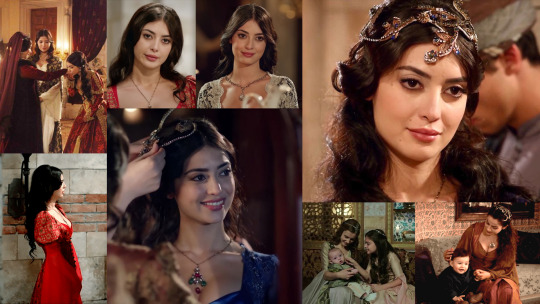
Sultana on the campaigns
After the birth of Mustafa, the sultan did not want to go anywhere without Emetullah and his son. From then on, Emetullah accompanied her sweetheart everywhere, hence her nickname became, the "itinerant sultana". The first such campaign took place in 1672, when Mehmed took the whole harem of his, his mother, his Haseki, and his sisters to Polish territory. From this trip we are left with a description of an incident in which Emetullah’s silver carriage was stuck in the mud due to bad weather on the way to the Babadag camp. The sultan could not wait for hours for the carriage to be released, so Fazıl Ahmed Pasha, the Grand Vizier, was left with his men to help the Sultana. On August 28, 1672, Kamianets-Podilskyi fell and became the property of the Ottomans. Mosque were formed from all the churches in the city, one of which was named in honor of Gülnüş. With this she became the first and only Haseki Sultan to enjoy such a privilege.
They spent a few months near the front and then returned to Edirne. However, the agreement was crossed by the Polish, so in 1673 Mehmed was forced to return to the front and took his sweetheart with him again. This is particularly noteworthy and not just because the sultans had not taken their wives on the battlefield for centuries, but because Emetullah Rabia Gülnüş was already heavily pregnant with her second son. The baby was finally born during the campaign on 31 December 1673 at Hacıoglupazarı in present-day Bulgaria. This was the only time an Ottoman prince was born near the battlefield, away from the security of the capital or the provinces. The fact is, however, that this camp was also very far from the real war.
After the success of the Polish campaign, the Sultan retreated to Edirne, where in 1675 he organized a huge ceremony in which his two sons, Mustafa and Ahmed, were circumcised and his eldest daughter, Hatice, was married off. Mehmed's appearance was reported at the event, but many praised the princes and Emetullah Rabia Gülnüş, who attended the ceremony as well. According to one agha present, the Sultana was a beautiful woman with chesnut hair. It is questionable, of course, to what extent we can believe such descriptions, since her hair was certainly covered with a veil, even if she was present. Then in 1676 Mehmed embarked on another campaign - again, of course, with his sweetheart on his side - this time to match the Russians. The aim of the campaign was to rule over today's Ukrainian - then Polish - territories. Finally, in 1681, the campaign ended with an agreement.
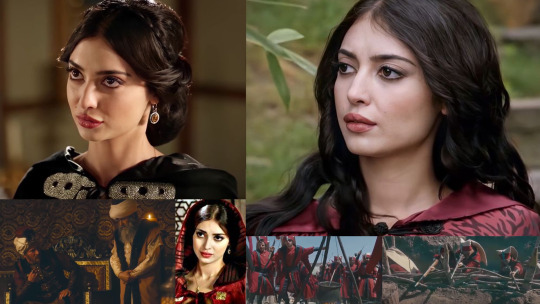
The first woman in the harem and the fall
Whatever the relationship between Turhan and Emetullah was, with the death of Turhan in 1683, the road to the top of the harem opened up before Emetullah. Although her large-scale construction projects, as a Haseki, began during Turhan’s life, her political career could have really gained momentum only without Turhan. There is a known case, for example, in which one of Mustafa's teachers, Feyzullah Efendi, who was very close to Emetulla committed a mistake and was faced with severe punishment. Eventually, Emetullah intervened and saved the man's life.
However, Emetullah could not enjoy the control of the harem for long. The 1680s were about a series of tragedies. The enemies of the Ottoman Empire clashed in turn and squeezed the Ottomans more and more out of European territories. This caused general dissatisfaction, and then over time, chaos, executions, financial problems spread throughout the empire, more and more rebellions set in, and even natural disasters plagued the empire. Turhan's death was practically sealed the end of Mehmed IV also. He became increasingly unpopular, and suffered the final blow in 1687. After the tragic outcome of the second battle of Mohács, Mehmed was dethroned and his younger brother, Suleiman, was put to the throne, as Suleiman II. This meant Emetullah's move to the Old Palace.
Not only did Emetullah face the loss of her power and exile, but she was separated from her beloved. A member of Mehmed’s harem, the poet Afife Kadin, at this time composed one of her poems about Gülnüş. According to the verse, Gülnüş sobbed and shouted as long as her lungs could hold, while her loved one was torn away from her and locked up. While Mehmed sobbed quietly in the kafes, his beloved cried across the wall. In another verse of hers, Afife writes, "Tell Gülnüş to wear black / to suffer in pain / While Sultan Mehmed weeps in Şimşirlik" We do not know if Emetullah and Mehmed may have met until Mehmed's death in 1693.
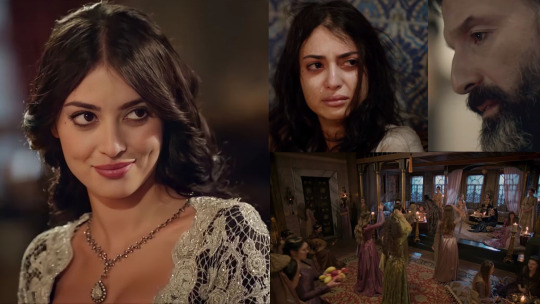
Back to the top
Due to Süleyman II's ill condition, followed by the old Ahmed II, Emetullah did not have to linger in the Old Palace for long. In 1695, barely 8 years after her retirement, Emetullah was able to return as Valide Sultan. Ahmed II died in Edirne and Mustafa II took his place as Sultan. Emetullah was then in the Old Palace in Istanbul, so thats where she received the news. As part of a huge ceremony, Emetullah went from the Old Palace to Topkapi Palace and from there to Edirne. On the way to Edirne, several bridges had to be renovated before the Valide Sultan's arrival. The costs of the bridge-renovations were recorded in the registers as Ahmed II's funeral expenses. Arriving in Edirne, her son welcomed the new Valide Sultan.
In the following years Edirne remained the de facto capital of the Empire. The sultan spent only a short period of time in Istanbul with his court, and then they were not resided in Topkapi Palace either, but preferred other palaces. Mustafa and Emetullah quickly gathered their trustworthy men around them and began to rule according to their own tastes. Thus, for example, the Feyzullah Efendi who had previously been rescued from execution by Emetullah, became the Seyhülislam. During Mustafa's reign, Emetullah built an unprecedented power for herself, her all-intertwined political influence was huge and also her son openly discussed state affairs with her. In addition, Emetullah regularly showed up among the people, leaving the harem, visiting her daughters or foundations. She lived a fairly free life. So much that at certain events she stood right next to her son, veiled but not hiding. At other times, she welcomed Seyhülislam, Grand Vizier, or other influential statesmen openly or were present at parades in Eyüb.
Emetullah’s tremendous influence over her son, the rampant corruption among statesmen, and the neglect of Istanbul all provoked the displeasure of the people. In 1703 a huge revolt broke out in the capital, but it quickly reached Edirne as well. Emetullah provided good advice to her son, trying to quickly replace any statesman who might have harmed them, but it was too late. During the rebellion Mustafa II was dethroned. The rebels refused to ascend Mustafa's younger brother, Ahmed, as he was also the son of Emetullah. They wanted to replace Mustafa II with the 11-years-old Şehzade Ibrahim, the son of Ahmed II and his Haseki, Rabia Sultan . The ulema, however, rejected this based on the boy's age, and as a polite gesture a letter was written to Emetullah asking for permission to dethrone Mustafa and replace him with Ahmed III. Although she had no real say, Emetullah responded in agreement:"All of you have requested in concord and unanimity that my majestic son Sultan Ahmed be seated on the imperial throne and that my other son Sultan Mustafa be deposed. Your petition has been complied with."
However, the dethronement of Mustafa was far from enough for the rebels. Gülnüş was demanded to leave Edirne or Topkapi Palace and retire to the Old Palace. Emetullah did indeed remain there until the circumstances calmed down enough for her to return. Perhaps she did not even regret her retreat, for Mustafa, her firstborn son, died in December 1703 of natural causes.
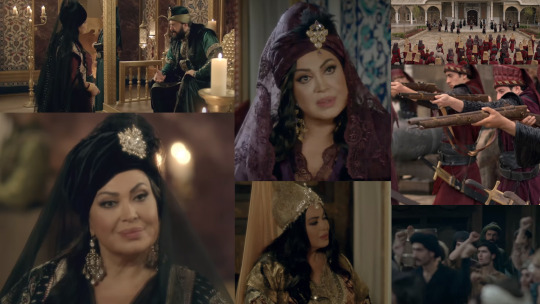
Shadow Valide
The pashas tried to keep Gülnüş away from her son and from state affairs because they feared a revenge from Emetullah on Mustafa's dethronement and subsequent death. They feared they would face a revenge campaign like the pashas who in 1648 dethroned and executed the son of Kösem Sultan, Ibrahim I. In the meantime, however, it turned out that Gülnüş did not even think of revenge. She learned from her previous mistakes and from the end of the Kösem Sultan, so she was much more careful and respectful with the pashas from then on than before. There were rewards for this.
One of Ahmed III’s first steps was to take the imperial court back to Istanbul, so Edirne ceased to be the de facto capital. To increase the sultan’s popularity among the people of Istanbul, plenty of public events were organized, such as archery competitions. Of course Gülnüş tried to help her second son, Ahmed III, but she did it all from the background. However, her participation in political life is by no means conditional. Several letters have survived, which she exchanged with the pashas during Ahmed III's reign. When one of the Grand Vizier tried to have a say in which eunuch Gülnüş would appoint to lead the harem, he quickly found himself without a position. So Emetullah Rabia Gülnüş did not give up politics at all, only she played it in a smarter and less spectacularly way.
Emetullah Rabia Gülnüş returned to the limelight once again. In 1709, during the war between the Russians and the Swedes, the Swedish king was captured and then found refuge in the Ottoman Empire. The king sought the help of the Ottomans to regain his throne. Emetullah, along with the second Vizier Damat Silahdar Ali Pasha, publicly stood by the king's request and tried to persuade Ahmed III to wage war against the Russians. The other members of the divan, such as the Grand Vizier, did not agree at all with Gülnüş's will, so a controversy ensued. Ahmed III finally, following the advice of his mother, went to war with the Russian Empire in 1711. The war ended with treaties.
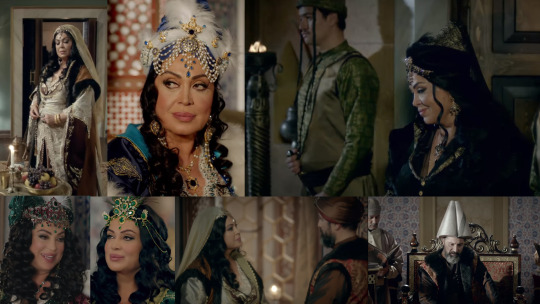
Her death and legacy
Emetullah Rabia Gülnüş followed her son from Istanbul to Edirne in the summer of 1715 to welcome there the army of the Grand Vizier, who had successfully re-conquered Morea from the Venetians. Her health here deteriorated in a few months and whatever the best doctors of the empire tried Emetullah Rabia Gülnüş died on November 6, 1715, in Edirne. Funeral prayers were held in Edirne in the presence of the Sultan, Grand Vizier, Ulema, and all important statesmen, and then her body was taken back to Istanbul, where she was buried in her own tomb on November 9th. Her turbe is particularly interesting, as it is not covered like most dynastic tombs, but open to the sky. By the way, this was built according to Emetullah's own wishes. There are plenty of plants and water in the octagonal tomb, which was probably built like that to resemble the Garden of Eden.
During her life, Gülnüş managed several construction projects, during which mosques, soup kitchens, schools, fountains and a tomb were built. But she converted several former churches into mosques also, and others were named in his honor. She also had foundations in Üsküdar, Edirne, Chios, Mecca, Medina, Kastamonu and Menemen.
Emetullah Rabia Gülnüş was the last valide sultan during the period of the Sultanate of Women. Although there were still some Valide with exceptional influence after her, no one was able to gain an influence similar to her and her predecessors anymore. It was the death of Emetullah Rabia Gülnüş that eventually completely ended the period of the Sultanate of Women. True, she was not the last Haseki Sultan, because her brother-in-law Ahmed II had a Haseki, Rabia Sultan, but the woman had already died in 1712 before Emetullah. So with the death of Gülnüş, on November 6, 1715, the more than 180-years-long period of the Sultanate of Women ended. The Sultanate of Women was followed by the Tulip era, which was one of the most peaceful periods in the history of the empire, during which Westernization began.

Used sources: B. İ. Argıt - A Queen Mother and the Ottoman Imperial Harem: Rabia Gülnuş Emetullah Valide Sultan (1640-1715); M. Ç. Uluçay - Padişahların Kadınları ve Kızları, Y.Öztuna - Devletler ve Hanedanlar, N. Sakaoğlu - Bu Mülkün Kadın Sultanları; M. Özgüleş - The Women Who Built the Ottoman World: Female Patronage and the Architectural Legacy of Gülnuş Sultan; H. G. Majer - The Harem of Mustafa II (1695-1703); J. Dumas - Les perles de nacre du sultanat; A. D. Alderson - The Structure of the Ottoman Dynasty; L. Peirce - The Imperial Harem: Women and Sovereignty in the Ottoman Empire; C. Finkel - Osman's Dream: The Story of the Ottoman Empire
* * *
Származása fiatalkora
Emetullah Rabia Gülnüş görög származású nő volt, akit minden bizonnyal a velencei-oszmán háború során fogtak el. A sors fintora, hogy a háború kirobbanása köthető volt IV. Mehmedhez, aki később Emetullah kedvese lett. I. Ibrahim 1645 nyarán hadat üzent Velencének és egy nagy török sereget küldött Krétára. A háború közvetlen oka az volt, hogy máltai kalózok fogtak el egy oszmán felségjelzésű hajót, mely több befolyásos személyt szállított. Köztük volt IV. Mehmed szoptatósdajkája és annak fia, akiket I. Ibrahim szultán nagyon szeretett. Olyannyira, hogy a szoptatósdajka fiával többet törődött, mint saját gyermekével, Mehmeddel. A háború évtizedeken keresztül zajlott, egészen 1669-ig, így pontosan nem meghatározható, hogy Emetullah mikor esett fogságba.
Emetullah egy bizonyos Deli Hüseyn Pasa ajándéka volt, aki a saját maga által ejtett krétai rabszolgákat vitte a szultáni palotába és a legjobbakat a szultán háremébe ajánlotta. Deli Hüseyn Pasa 1659-ben elhunyt, így Emetullah mindenképp ezen időpont előtt került a hárembe. Ez sajnos nem segít nekünk, ugyanis tekintve, hogy Emetullah 1660-ban már a szultán kedvence volt és ezt több éves oktatás kellett, hogy megelőzze, a legvalószínűbb, hogy 1654 előtt esett fogságba. Sokan adják meg az 1645-ös évet, mint fogságba esés, azonban ez szinte kizárt. Általában 5 év alatti gyerekeket nem fogtak el, velük több volt a baj, mint a haszon és nagy eséllyel haltak meg a hosszú és viszontagságos út során. Ha feltételezzük, hogy Emetullah nagyjából egy idős volt - vagy fiatalabb -, mint IV Mehmed (1642), legkorábban 1648-ban eshetett fogságba.

Az ágyas
Emetullah Rabia Gülnüş csodaszép fiatal nővé érett, így tökéletesen alkalmas lett a szultán szórakoztatására. Emetullah azon kevés szultána közé tartozik, akinek külsejét meglehetősen részletesen ismerjük. Az egyik követnek lehetősége volt látni Emetullah egyik ruháját és övét, mely alapján az átlagnál magasabb, de kecses nőnek gondolta a szultánát. Ugyanez a követ úgy hallotta informátorától, hogy a szultánának finom bőre és kék szeme van. Más leírások szerint fekete göndör haja volt. Élete vége felé Emetullah a beszámolók szerint inkább volt telt, mint karcsú.
Nem tudni pontosan, hogy Mehmed mikor kezdett ágyasokat fogadni és hogy Emetullah mikor vált a kedvencévé. Mehmed első gyermeke, egy kislány 1660-ban született. Közvetett bizonyítékok alapján ez a lány, Hatice, Emetullah Rabia Gülnüş első gyermeke volt. Ez alapján feltételezhetjük, hogy Emetullah a kései 1650-es években vált Mehmed partnerévé. Kapcsolatuk azonban ekkoriban még nem mélyült el igazán, hiszen Mehmed a következő időszakot a háremétől távol töltötte, sokat utazott.
A szultán nemsokkal később az egész udvartartását áthelyezte Edirnébe, ezzel gyakorlatilag mintegy de facto fővárossá tette meg az általa annyira kedvelt várost. Tökéletes időzítés volt, hogy elsőszülött fia, Musztafa itt látta meg a napvilágot 1664-ben. Mehmed annyira örült fia születésének, hogy elképesztő ajándékokkal halmozta el a gyermek anyját, Emetullah Rabia Gülnüşt és innentől kezdve sosem hagyta magára a nőt. Magával vitte a vadászataira, sőt hadjárataira is. Együtt még legalább két gyermekük született, Ahmed (későbbi III. Ahmed) 1673-ban és Fatma Emetullah 1675-ben. Mehmednek a fent említett négy gyermeken kívül bizonyosan voltak más gyermekei (Ayşe, Bayezid, Ümmügülsüm, Süleyman). Az ő anyjuk kiléte ismeretlen, lehetett Emetullah Rabia Gülnüş is, de akár más ágyasok is.
Mint a szultán kiemelt ágyasa, gyermekeinek anyja Emetullah a hárem második legmagasabb rangú asszonya volt. Viszonya a hárem első asszonyával ellentmondásos. Egyesek szerint Emetullah gonosz, erőszakos nő volt, aki rendszeresen szállt szembe anyósával, Mehmed édesanyjával, Turhan Hatice Valide szultánával. Azonban nincs erre utaló bizonyíték, sőt! Emetullah és Turhan időszakosan bizonyosan együttműködtek, hogy politikai céljaikat elérjék. 1682-ben Merzifonlu Kara Mustafa Pasa nagyvezír egyre jobban kezdte dühíteni Turhant, ugyanis próbálta ellehetetleníteni annak politikai befolyását. Azt nem tudjuk, hogy Gülnüş milyen motiváció miatt, de segített Turhannak a pasa eltávolításában. Végül sajnos Turhan előbb halt meg, minthogy a pasát lefokozták volna. Akárhogyan is, ez az együttműködés teszi valószínűtlenné, hogy Emetullah és Turhan közt rideg lett volna a kapcsolat. Mindemellett Emetullah jó viszonyt ápolt Turhan eunuchjával, Yusuf Agával, ami szintén nem lett volna lehetséges, ha a két nő nem kedveli és tiszteli egymást.
Sokan a feltételezett rideg kapcsolatért Emetullah ambícióit okolják. A legenda úgy tartja, hogy Mehmedet kedvese, Emetullah Rabia Gülnüş szultána igyekezett meggyőzni arról, hogy végeztesse ki elzárva tartott féltestvéreit és helyettük közös fiaikat tegye meg örökösének. Ismerve azonban a Mehmed és fiai közt fennálló végtelenül szoros viszonyt, nem zárhatjuk ki, hogy maga Mehmed kívánta megváltoztatni az öröklést. Akárki is volt a kifundálója, senki sem támogatta az ötletet, sem a nép, sem a pasák és Mehmed anyja, Turhan szultána sem. Turhan, hogy megóvja Szulejmán és Ahmed hercegeket a haláltól, fiát pedig a bukástól, mindig maga mellett tartotta két nevelt fiát. Ha Turhan utazott, magával vitte őket, nehogy távollétében Mehmed kivégeztesse őket.

Szultána a fronton
Musztafa születése után a szultán nem kívánt Emetullah és fia nélkül bárhová is menni. Innentől kezdve Emetullah mindenhová elkísérte kedvesét, innen ered beceneve, a "vándorló szultána" (itinerant sultan). Az első ilyen hadjáratra 1672-ben került sor, mikor Mehmed az egész háremét, anyját, Haszekijét, húgait is magával vitte a lengyel területekre. Erről az útról marad ránk egy esemény leírása, miszerint babadagi tábor felé vezető úton a rossz időjárási viszonyok miatt Emetullah ezüst fogata beragadt a sárba. A szultán nem várhatott órákat, amíg az elakadt kocsit kiszabadítják, így Fazıl Ahmed Pasa, a nagyvezír maradt hátra embereivel, hogy segítse a szultánát. 1672. augusztus 28-én Kamianets-Podilskyi elesett és az oszmánoké lett. A városban található összes templomból mecsetet alakítottak, melyek közül az egyiket Gülnüş tiszteletére nevetek el. Ezzel ő lett az első és egyetlen Haszeki szultána, aki ilyen kiváltságban részesülhetett.
Néhány hónapot töltöttek a front közelében, majd visszatértek Edirnébe. A megkötött egyezséget azonban a lengyelek keresztülhúzták, így 1673-ban Mehmed kénytelen volt visszatérni a frontra és magával vitte kedvesét is. Ez azért különösen említésre méltó, mert azontúl, hogy a szultánok évszázadok óta nem vitték harctérre asszonyaikat, Emetullah Rabia Gülnüş már előrehaladott terhes volt második fiával, akit végül a hadjáraton szült meg 1673. december 31-én Hacıoglupazarınál, a mai Bulgária területén. Ez a valaha volt egyetlen olyan eset, amikor egy oszmán herceg a hadszíntéren született meg, távol a főváros vagy a provinciák biztonságától. Tény azonban, hogy ez a tábor is igen távol volt a valódi fronttól.
A lengyel hadjárat sikere után a szultán Edirnébe vonult vissza, ahol 1675-ben hatalmas ünnepséget szervezett, melyen két fiát Musztafát és Ahmedet körülmetélték, legidősebb lányát Haticét pedig kiházasította. Az eseményen beszámoltak Mehmed külleméről, de sokan méltatták a herceget és Mehmed mellett az ünnepségen résztvevő Emetullah Rabia Gülnüşt is. Az egyik jelenlévő szerint a szultána gesztenyebarna hajú, gyönyörű nő volt. Kérdéses persze mennyire hihetünk az ilyen jellegű leírásoknak, hiszen haját egészen biztosan fátyol fedte, ha jelen volt is. 1676-ban aztán Mehmed újabb hadjáratra indult - természetesen ismét kedvesével az oldalán -, ezúttal az oroszokkal kívánt megmérkőzni. A hadjárat célja az mai ukrán - akkori lengyel - területek feletti uralom volt. Végül 1681-ben megállapodással zárult le a hadjárat.

A hárem első asszonya és a bukás
Bármilyen volt is Turhan és Emetullah kapcsolata, Turhan 1683-as halálával megnyílt Emetullah előtt az út a hárem csúcsára. Bár nagyszabású Haszekiként végzett építési projektjei még Turhan életében elkezdődtek, politikai karrierje ekkor lendülhetett meg igazán. Ismert például egy eset, mikor Musztafa egyik tanítója - aki igen közel állt Emetullahoz - Feyzullah Efendi hibát követett el és súlyos büntetés volt kilátásba helyeztve számára. Végül Emetullah közbelépett és megmentette a férfi életét.
Emetullah nem élvezhette azonban sokáig a hárem irányítását. Az 1680-as évek a sorozatos tragédiákról szóltak. Az Oszmán Birodalom ellenségei sorra fogtak össze egymással és szorították egyre kintebb az oszmánokat az európai területekről. Ez általános elégedetlenséget okozott, majd idővel káosz, kivégzések, anyagi problémák terjedtek el mindenhol a birodalomban, egyre több lázadás indult útjára és még természeti katasztrófák is sújtották a tragikus helyzetben lévő birodalmat. Gyakorlatilag már anyja halálával megpecsételődött Mehmed sorsa, egyre népszerűtlenebb lett, a végső csapást pedig 1687-ben szenvedte el. A második mohácsi csata tragikus kimenetele után Mehmedet trónfosztották és öccsét, Szulejmánt ültették trónra, aki így évtizedekig tartó elzárt élete után megkezdhette uralkodását II. Szulejmán néven. Ez egyet jelentett Emetullah Régi Palotába való költözésével.
Emetulláhnak nem csak a hatalma elvesztésével és száműzetéssel kellett szembenéznie, de elválasztották őt kedvesétől. Mehmed háremének egy tagja, a költő Afife Kadin ekkoriban komponálta egyik Emetullah Rabia Gülnüşről szóló versét. A vers szerint Gülnüş szultána addig zokogott és kiáltozott, mikor kedvesét a szultánt elszakították tőle és elzárták, amíg csak bírta a tüdeje. Mehmed pedig csendben zokogott a kafesben, míg szerelme a fal túloldalán sírt. Egy másik versében azt írja "Mondd Gülnüşnek, viseljen feketét / hogy abban szenvedje el fájdalmát / míg Mehmed szultán Şimşirlikben sír". Nem tudjuk, hogy Emetullah és Mehmed találkozhattak e még Mehmed 1693-as haláláig.

Vissza a csúcsra
II. Szulejmán szultán beteges állapota miatt, majd az őt követő II. Ahmed kora miatt nem kellett Emetullahnak sokáig a Régi Palotában senyvedni. 1695-ben, alig 8 év után Emetullah valide szultánaként térhetett vissza. II. Ahmed Edirnében hunyt el és a szintén jelenlévő II. Musztafa vette át a helyét szultánként. Emetullah ekkor Isztambulban a Régi Palotában volt, itt kapta meg a hírt. Emetullah hatalmas ünnepség keretei között a Régi Palotából a Topkapi Palotába ment, onnan pedig Edirnébe. Az Edirnébe való út során több hidat kellett megújítani a valide szultána előtt, melyek költségeit mind II. Ahmed temetési költségeiként vezettek fel a jegyzőkönyvekbe. Edirnébe érve fia üdvözölte az új valide szultánát.
A következő években is Edirne maradt a birodalom központja, csak rövidebb időszakot töltött az udvar Isztambulban és akkor sem a Topkapi Palotában voltak, hanem más palotákat részesítettek előnyben. Musztafa és Emetullah gyorsan maguk köré gyűjtötték megbízható embereiket és saját szájízük szerint kezdtek uralkodni. Így lett például Seyhülislam abból a Feyzullah Efendiből, akit korábban már egyszer Emetullah megmentett a kivégzéstől. Musztafa uralkodása alatt Emetullah sosem látott hatalmat épített magának, mindent átszőtt politikai befolyása de fia is nyíltan megvitatta vele az államügyeket. Emellett Emetullah rendszeresen mutatkozott az emberek közt, hagyta el a háremet, látogatta meg lányait vagy alapítványait. Meglehetősen szabad életet élt. Olyannyira, hogy bizonyos eseményeken egyenesen fia mellett állt elfátyolozva, de nem elbújva. Máskor a Seyhülislamot, nagyvezírt vagy más befolyásos államférfiakat fogadott nyíltan vagy parádékat tekintett meg Eyüb városrészben.
Emetullah hatalmas befolyása fiára, az államférfiak közt dívó korrupció és Isztambul elhanyagolása mind a nép nemtetszését váltották ki. 1703-ban hatalmas lázadás tört ki a fővárosban, de gyorsan elérte Edirnét is. Emetullah jó tanácsokkal látta el fiát, igyekeztek gyorsan leváltani minden államférfit, aki kárt okozhatott volna nekik, de már késő volt. A lázadás során II. Musztafát trónfosztották. A lázadók azt is elutasították, hogy Musztafa öccsét, Ahmedet emeljék trónra, hiszen ő is Emetullah fia volt, helyette II. Ahmed és Haseki Rabia szultána 11 éves fiát, Ibrahim herceget akarták a trónra ültetni. Az ulema azonban ezt elutasította a fiú korára való tekintettel és illedelmes gesztusként levelet írtak Emetullahnak, melyben engedélyét kérték Musztafa trónfosztásához. Bár nem volt valódi beleszólása, Emetullah beleegyezően válaszolt.
A lázadóknak azonban Musztafa trónfosztása távolról sem volt elég. Követelték, hogy Gülnüş hagyja el a Topkapi palotát és vonuljon vissza a Régi Palotába. Emetullah valóban ott maradt, amíg a körülmények nem nyugodtak meg eléggé visszatéréséhez. Talán nem is bánta az elvonult életet, ugyanis Musztafa, elsőszülött fia 1703 decemberében természetes okok következtében elhunyt.

Árnyék Valide
A pasák azért igyekeztek Gülnüşt távol tartani fiától és az államügyektől, mert attól tartottak bosszút állna rajtuk Musztafa trónfosztása és későbbi halála miatt. Féltek, hogy egy olyan bosszúhadjárattal találnák szembe magukat, mint azok a pasák, akik 1648-ban Köszem szultána fiát, Ibrahimot trónfosztották és kivégezték. Gülnüşről azonban időközben kiderült, hogy eszében sincs bosszút állni. Tanult az esetből és Köszem szultána halálából, így sokkal óvatosabban, tisztelettudóbban viselkedett a pasákkal, mint korábban. Ennek meg is lett az eredménye.
III. Ahmed egyik első lépése az volt, hogy a birodalmi udvartartást újra visszavitte Isztambulba, így Edirne megszűnt de facto fővárosnak lenni. Hogy a szultán népszerűsgét növeljék Isztambul népe között, rengeteg nyilvános eseményt szerveztek, például íjászati bemutatókat. Természetesen Gülnüş második fia, III. Ahmed uralkodása során is kényelemben élt és igyekezett segíteni fiát, de mindezt a háttérből tette. Részvétele a politikai életben azonban egyáltalán nem feltételes. Fennmaradt több levele is, melyet a pasákkal váltott III. Ahmed uralkodása során. Mindemellett, amikor az egyik nagyvezír megpróbált beleszólni abba, hogy Gülnüş melyik eunuchot nevezi ki a hárem élére gyorsan pozíció nélkül találta magát. Emetullah Rabia Gülnüş tehát egyáltalán nem hagyott fel a politikával, csak azt okosabban és kevésbé látványosan tette.
Emetullah Rabia Gülnüş még egyszer visszatért a rivaldafénybe. 1709-ben az oroszok és svédek közti háború során a svéd király fogságba esett, majd az Oszmán Birodalomban talált menedékre. A király az oszmánok segítségét kérte, hogy visszaszerezhesse trónját. Emetullah a második vezír Damat Silahdar Ali Pasával karöltve nyilvánosan álltak a király kérése mellé és igyekeztek rávenni III. Ahmedet, hogy vállaljon háborút az oroszokkal. A divan más tagjai, így a nagyvezír egyáltalán nem értettek egyet Gülnüş akaratával, így vita alakult ki. III. Ahmed végül az édesanyja tanácsát követve bocsátkozott 1711-ben háborúba az Orosz Birodalommal, mely egyezményekkel zárult.

Halála és hagyatéka
Emetullah Rabia Gülnüş 1715 nyarán követte fiát Isztambulból Edirnébe, hogy ott üdvözöljék a nagyvezír seregét, aki sikeresen hódította vissza Moreát a velenceiektől. Egészsége itt néhány hónap alatt leromlott és bármivel is próbálkoztak a birodalom legjobb orvosai Emetullah Rabia Gülnüş 1715. november 6-án, Edirnében meghalt. A temetési imákat Edirnében mondták a szultán, nagyvezír, ulema és minden fontos államférfi jelenlétében, majd testét visszavitték Isztambulba, ahol saját türbéjében temették el november 9-én. Türbéje kifejezetten érdekes, ugyanis nem fedett, mint a legtöbb dinaszitkus türbe, hanem az ég felé nyitott. Ez egyébként Emetullah saját kívánsága szerint épült így. Az oktagonális türbében rengeteg a növény és a víz, mely valószínűleg amiatt épült így, hogy hasonlítson az Édenkertre.
Élete során Gülnüş több építkezési projektet menedzselt, melynek során mecset, leveskonyha, iskola, kút, türbe épült. De több korábbi templomot építtetett át mecsetté, másokat pedig tiszteletére neveztek el. Emellett volt alapítványa Üsküdarban, Edirnében, Chiosban, Mekkában, Medinában, Kastamonuban és Menemenben.
Emetullah Rabia Gülnüş volt az utolsó valide szultána a Nők szultánátusának időszakában. Bár utána is akadt néhány kivételes befolyással bíró Valide, az övéhez és elődeihez hasonló befolyást senkinek sem sikerült többé szerezni. Emetullah Rabia Gülnüş halála volt az, amely végül teljesen lezárta a Nők szultánátusának időszakát is. Igaz, nem ő volt az utolsó Haszeki szultána, mert sógorának II. Ahmednek volt egy Haszekije, Rabia Sultan, a nő már Emetullah előtt, 1712-ben meghalt. Gülnüş halálával, 1715. november 6-n lezárult az a több, mint 180 éves időszak, mely során befolyásosabbnál befolyásosabb nők váltották egymást az Oszmán Birodalom előkelőségei között. A Nők szultánátusát a Tulipán éra követte, mely az egyik legbékésebb időszaka volt a birodalom történetének, és mely során elindult a nyugatosodás a birodalomban.

Felhasznált források: B. İ. Argıt - A Queen Mother and the Ottoman Imperial Harem: Rabia Gülnuş Emetullah Valide Sultan (1640-1715); M. Ç. Uluçay - Padişahların Kadınları ve Kızları, Y.Öztuna - Devletler ve Hanedanlar, N. Sakaoğlu - Bu Mülkün Kadın Sultanları; M. Özgüleş - The Women Who Built the Ottoman World: Female Patronage and the Architectural Legacy of Gülnuş Sultan; H. G. Majer - The Harem of Mustafa II (1695-1703); J. Dumas - Les perles de nacre du sultanat; A. D. Alderson - The Structure of the Ottoman Dynasty; L. Peirce - The Imperial Harem: Women and Sovereignty in the Ottoman Empire; C. Finkel - Osman's Dream: The Story of the Ottoman Empire
#Emetullah Rabia Gülnüş#emetullah rabia gulnus#emetullah rabia#emetullah#rabia#rabia gülnüş#gülnüş#gulnus#Mehmed IV#turhan hatice sultan#turhan hatice#turhan#ibrahim I#sultanate of women#Ahmed II#mustafa ii#ahmed iii#Süleyman II#Suleiman II#ayşe hafsa#Haseki Hürrem Sultan#ayse hafsa sultan#haseki nurbanu sultan#nurbanu valide sultan#Nurbanu Sultan#haseki safiye sultan#Safiye#safiye sultan#handan sultan#halime sultan
51 notes
·
View notes
Text

KADIN
Kadın, âdemden doğan, âdemi doğuran
Hz. Asiye gibi firavuna karşı koyan
Hz. Meryem gibi iffetli olan
Rahmanın Rahim sıfatını taşıyan kadın
Nemruttan kaçıp İbrahimi mağrada doğuran
Ömerlere, Yavuzlara, Fatihlere ana olan kadın
Hz. Hatice gibi sadık
Hz. Fatıma gibi cennet kokan
Zeynep gazaliler gibi davası için ölümüne koşan kadın
Hiç düşünmeden sırtında süt bebesiyle cephelere mermi taşıyan
Savaşlara katılarak korkusuzca cenk eden
Ülkesi için düşman karşısında gözünü kırpmadan can veren kadın
Sabahın seherinde tarlaya koşan
Doğurduğu evladı için saçını süpürge eden
Kıymeti ve değeri bilinmeyen ana ve eş kadın
Örtüsünden dolayı horlanıp dışlanan
Özgürlükleri ve hürriyeti kısıtlanan
Keyfiyetçiler tarafından okuma iradesi elinden alınan kadın
İstemediği halde zorla evlendirilen
Dedesi yaşındakine üç beş kuruşa satılan
Hür iradesini kullanmaya fırsat verilmeyen kadın
Yargılanmadan meydanlarda vurulan
Acımasızca sokak ortalarında darp edilen
Hayasızca ticareti yapılan kadın
Güzel ahlakı hayatına sokarak izzet ve şereflenen
Arını namusunu dış etkenlere karşı koruyan
Hak ettiği hakkı verilmesi gereken
Ayağının altında cennet kokan kadın
Ve Kadın, Allah'ın en değerli emaneti olan...🌺🦋
.
.
20 notes
·
View notes
Note
I see you’ve read/seen a lot of interpretations of this story. I am only familiar with Magnificent Century, Falconer’s book and Kadin, written by Bertrice Small, whose books are very enjoyable if you don’t take them seriously. It makes me wonder, how do the depictions of Hürrem and Süleyman’s story you’ve read compare to each other?
Heh, I haven't seen/read all that much in its entirety. Aside from Magnificent Century, I've read Pavlo Zagrebelny's novel, Colin Falconer's book, Demet Altınyeleklioglu's "Hürrem", have watched "Hürrem Sultan", the Turkish 8-episode long miniseries aired in 2003 and am familiar with the brief summaries of some early plays of Hürrem's story, described in "Roxelane in European Literature, History and Culture".
As works of art, I enjoy all of these for what they are. There is stuff each of them did right and each of them did wrong in adapting this story in their respective formats. I understand the corners some of them had to cut (though Hürrem Sultan 2003 cut way too many corners), I understand (most of) the compromises they did in order to present their own themes and voice.
Say, Colin Falconer's book truly is a satire that I could never take seriously in terms of Hürrem and Süleiman, but it did something no other interpretation did plausibly enough in my eyes, and that is: showing precisely how Süleiman fell in love with Hürrem and fell out of love with Mahidevran. We got a decent presentation of what he likes in both of them and what does Hürrem have more of. Now, is it also because she somehow dares to enjoy sex unlike the other girls, aside from the other obvious traits of hers like giving good political advice, playing instruments and making him laugh? Yes, of course, because it's "The Sultan's Harem" by Falconer and I expect nothing else. But the process was at least gradual enough and we had enough of his feelings presented and enough chamber scenes that contrast both of them for me not to question it at all. With the other interpretations, something was missing for me - it was all either very forced and plot-convenient (like in DA's book, where Valide loved Mahidevran and YET, wanted to introduce Hürrem to SS and THEN telling herself she played no part at all in SS's falling out with Mahi, we also had Mahidevran that is very extra and taking no crap at all, beating her maids with a stick every time she got angry, and THEN we have her saying that she was never once jealous, never this temperamental since Hürrem, which is very unbelievable in her case, AND we have SS saying that he has never felt joy since the death of prince Mahmud from the book's equivalent of Gülfem, which... then what were you doing with Mahi for so many years, you unbelivable hypocrite?), either very sudden and not fleshed out at all (like in the 2003 series, where we had a literal 1 year time-skip the second after Hü entered the harem and then she went to SS's chamber and.. that was basically it, they became pretty much inseparable since then.). To be honest, Pavlo Zagrebelny hits way more marks in this, compared to all these examples, but the way the beating happened and its part of the falling even more in love process is... less than stellar. MC's problem is that the reasons he fell in love with Hürrem were far more implicit than explicit until.. season 4, basically, these precious scenes where they laughed together were reserved only for the first earlier episodes and then the "concubine arcs" came, which also did a lot to blur their "amazing love". The plays at least take the standard approach (love at first sight after Hü being presented to Valide and/or Hü winning him over), but yeah, Falconer's take takes the cake here, despite of all the negative implications.
All these interpretations aren't that big on historical accuracy, since while they follow the same framework, they are more than willing to detach from the known facts and/or chronology when the plot, themes and character motivations demand it. Pavlo Zagrebelny placed Bayezid's execution way earlier, when Hürrem was alive, for her tragedy to become even more heartbreaking. DA had Hürrem have an affair with a wealthy merchant in the name of Frederick (which happened.. a while before Selim's birth, of course, so there was some doubt Selim was Frederick's...) and Iskender Pasha's (their equivalent to MC Iskender Celebi) wife be infatuated with Hürrem. Hürrem Sultan 2003 for some reason had Mehmet be sent to Amasya instead of Manisa. Which is the most historically accurate?? Probably none. Hürrem 2003 and Pavlo Zagrebelny's book are pretty up there, however, because Bayezid's execution was the only time I recall they did some change, but I could be wrong. (at least that was the only glaring, major change) Hürrem Sultan 2003 was more of a documentary series than a serial drama, tragedy or the like and we could say it is more accurate in comparison to the others, but for its own 8 episodes it doesn't stand out as much. But, oh no, don't get me started on the plays, because they're more ridiculous than even Falconer. Like the one with the outrightly soapy twist where they have switched the children, so Mustafa turns out to be the son of Hürrem (she's even called Regina there!), but Hürrem learns it only when she had already played her part to kill him. Those are truly peak comedy! 🤣 The harem titles are a mess everywhere, though. And no version of the story, Zagrebelny's aside, gave Hürrem's haseki title the gravitas it got historically, with Mahidevran even being a Haseki both in the 2003 series and in DA's book, so fans, this isn't Magnificent Century's invention, thank you very much.
The portrayal of the various characters mostly depends on which side the writers are on and where they want to put nuance. Pavlo Zagrebelny, with his work being rooted completely in Hürrem's favor, has the rest of the characters aside from Süleiman very antagonized to mirror the toxic Ottoman system Anastasia (yes, Hü is Anastasia Lisovska there) has found herself in, but I think they're nuanced enough to be realistic, unlike the satirical caricatures and one-dimensional archetypes Falconer cooked up. Demet Altınyeleklioglu had more than decent characterization overall, despite of some failings here and there. (like her Mahidevran being a mixed bag that is guilty-pleasure material, Ibrahim's motivations being too vague at times, regardless of his depth and their Hatice being.. Aybige 2.0, which is also 2003 Şah Sultan, by the way.) Hürrem Sultan 2003 had a problem with this, because of its more documentary nature. It only shows the historical events in depth enough to say "Well, that happened!" and nothing more. Is it because they had to compress time or rush stuff when the show didn't succeed as much as they expected it would? Is it because they found themselves lacking time to flesh out the characters and put them through arcs post-E05? It is because they didn't want to touch the issue of Mustafa's death yet, so that's why it happened so ridiculously and came out of absolutely nowhere? Nobody knows. Still, I think Magnificent Century succeeded to have almost everyone get a glimpse of spotlight, while these interpretations were more focused on one particular story, giving much less attention to everything else.
Aside from Falconer's take, I liked all the Hürrems in the fictional interpretations I have read /seen. As I said, DA's Hürrem is perhaps the one I could see as the historical figure - both nuanced and realistic. She has been taught haremly manners back in the Crimean saray AND engrained in the life of the wild animals in the forest before that since the age of 14/15, which creates a juicy combination of wit, charisma, lost innocence and character depth. Her motivations are particularly interesting - what is driving her her personal determination to be remembered for what she is and what she does, not what she used to be, which is an empowering catalyst to her will to survive. We see how she does all these little steps to get to the top, detaching from her past as a result, and that is shown throughout the whole story, unlike in Magnificent Century, and she wants to do it, unlike Pavlo Zagrebelny's character. This determination of hers to become something remarkable is moved by all the trauma she had experienced and she constantly has to fight with the belief that one could never go past where they've come from. She, like Meryem Uzerli's Hürrem, is both emotional and smart. Honestly, her hypocrisy and the ways in which she manipulates could get to my nerves and I can't really root for her, like MC or Zagrebelny's Hürrem, but she truly is a fascinating character. Zagrebelny's character is also very sympathetic, with her getting higher and highter positions, but never forgetting where she came from, never forgiving them for taking her childhood away from her. Her story is probably the most tragic one right from the start, since the more she rises in the hierarchy, the more she remembers her own background and this palace truly feels like a cage for her, taking so much of her strength to keep it all together. I feel the funny side of her character is focused the most on out of all the interpretations, because of the numerous scenes she laughs (also because she feels cold and that's the only way she knows how to diminish it and lighten up the mood in the cold palace) and because the very first thing the harem remembers her with, is her laugh that contrasts with all else. Her ambitious hatred for Süleiman could be very overplayed, especially near the end, but I let it slide because it works more often that it doesn't. (and the most powerful poem in the book wouldn't have existed, if it weren't for her hatred for SS!) Hürrem in the 2003 series is fine, but underwritten, like literally every other character there except Valide Hafsa, but she is harmless enough and her best moments are with SS and that's a rare and precious thing to have. The plays have Hürrem portrayed mostly in extremes (with some nuanced takes here and there), but the ways some of them establish her character can be very unique and imaginative. (like the one in which they did that through an in-depth interview with her!)
Süleiman is... there, but that's to be expected, since these aren't his stories. The most fleshed out Süleiman is of course, MC Süleiman from our beloved Halit Ergenç. Whether we like him or not, he had a well-developed character arc and was very well written and deconstructed. Next to him is probably Zagrebelny's SS, but outside of his love for Hürrem, I feel he is characterized more through descriptions of his historical campaigns and of his actions for the state than dialogue. The others weren't as memorable, but I give 2003 SS props for not acting like a total douchebag after the beating.
#magnificent century#ask#minetteskvareninova#i could go on and on for all the characters#but that would turn out way way too long#btw i don't remember the exact names of the plays I refered to#because gosh that book has summerized soo many
13 notes
·
View notes